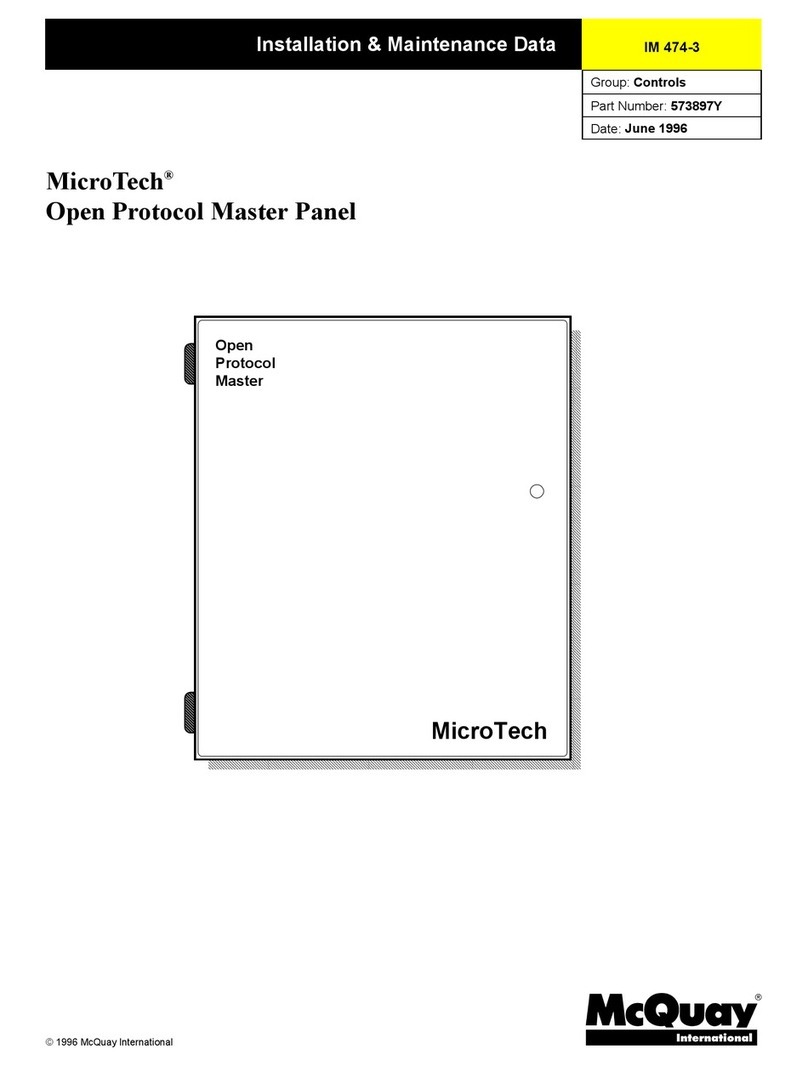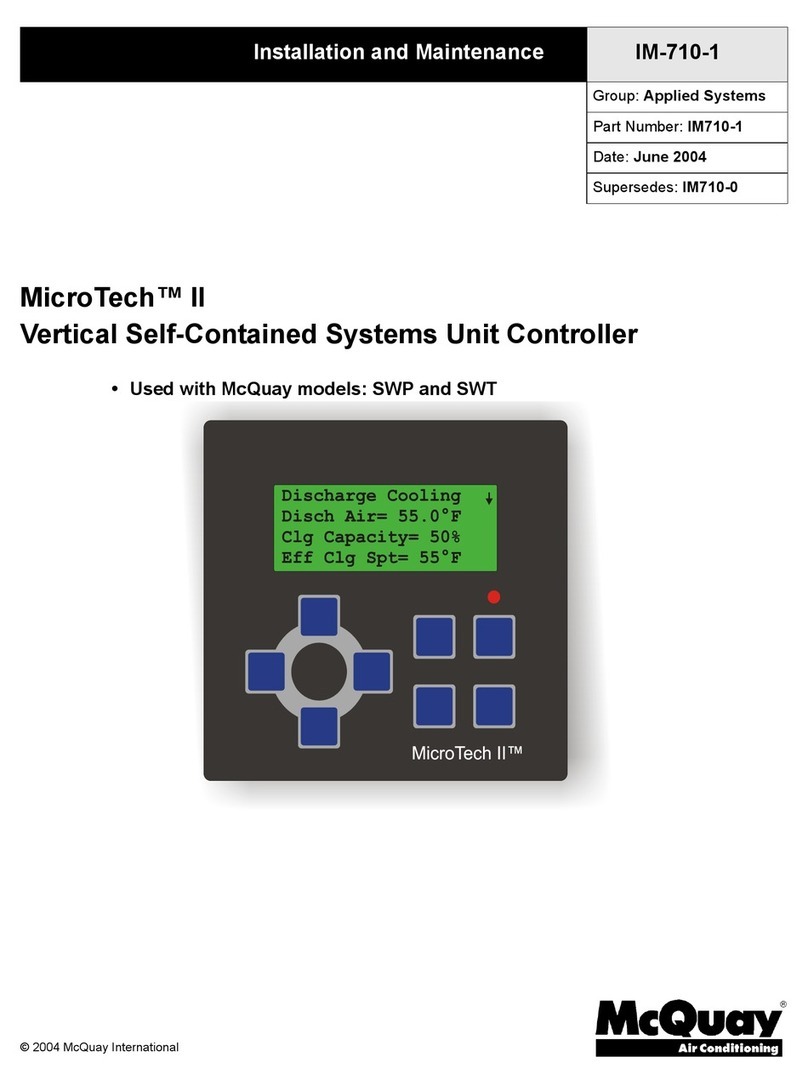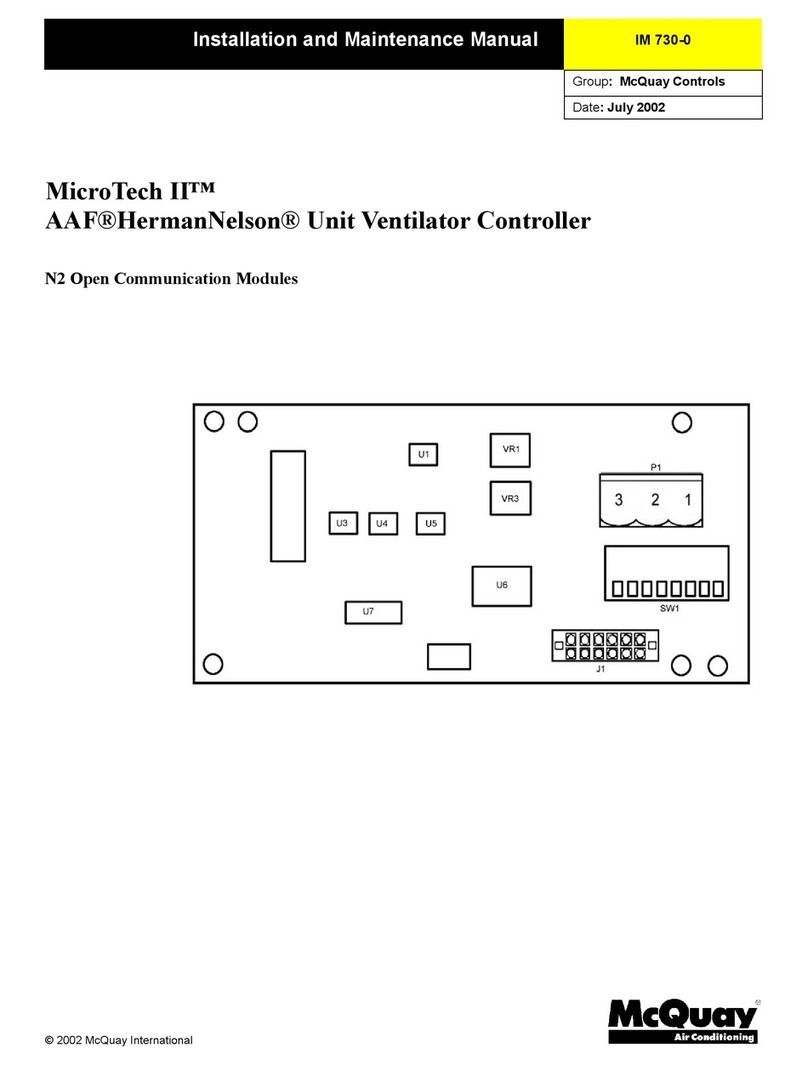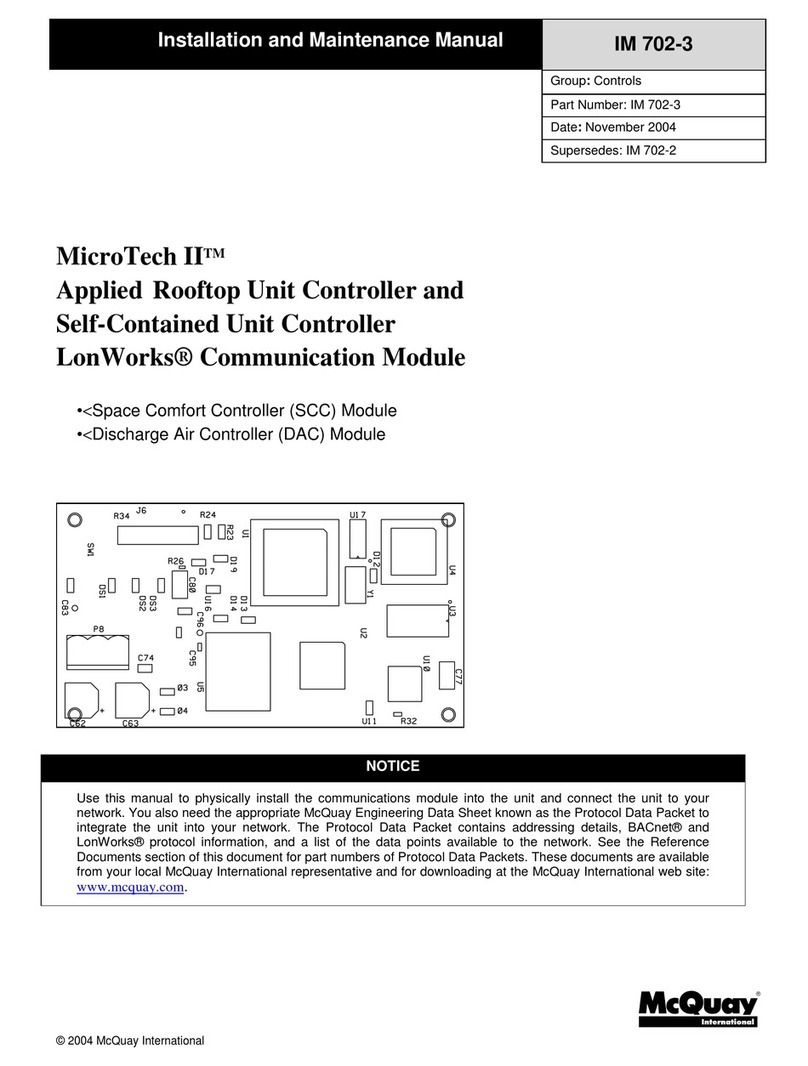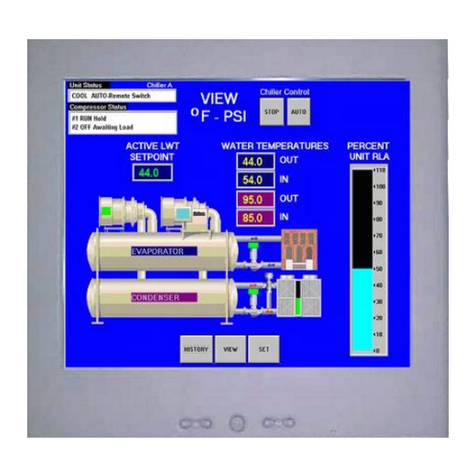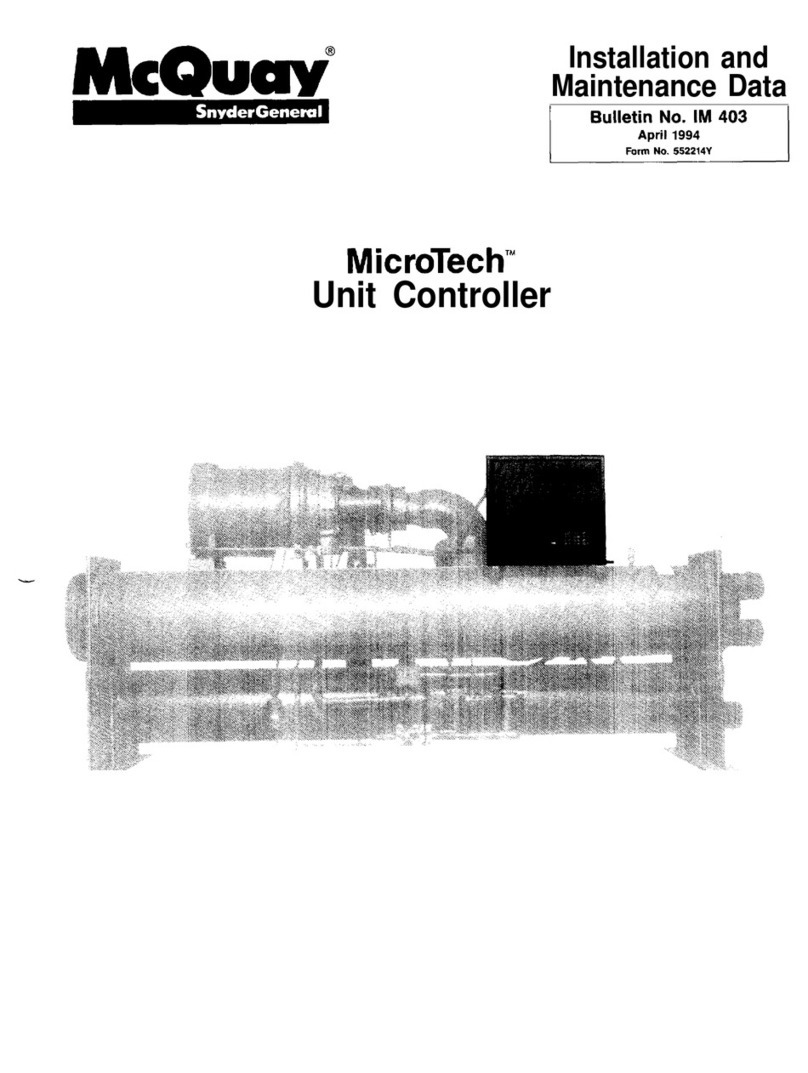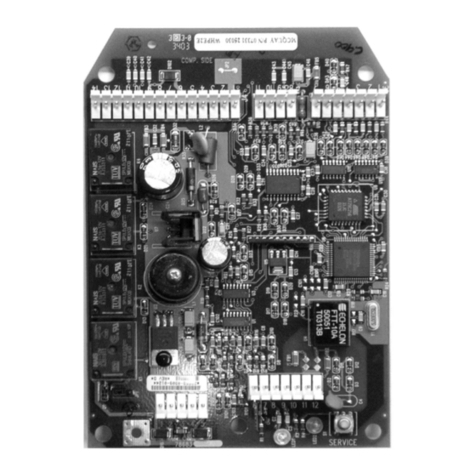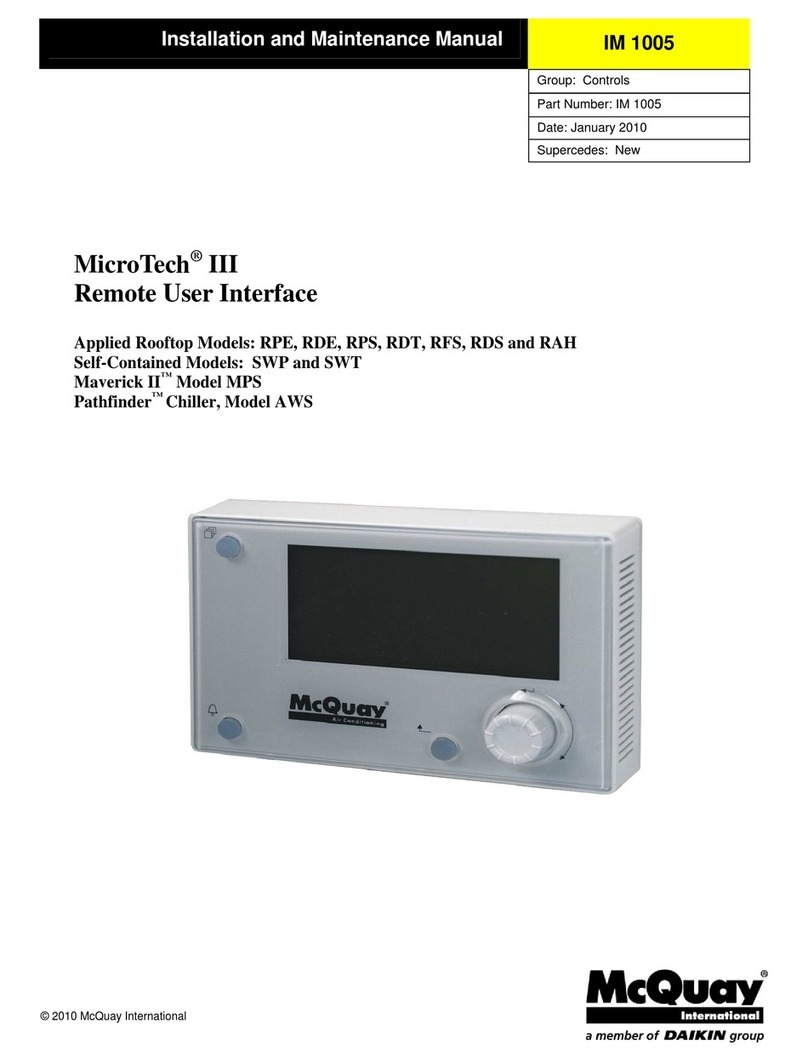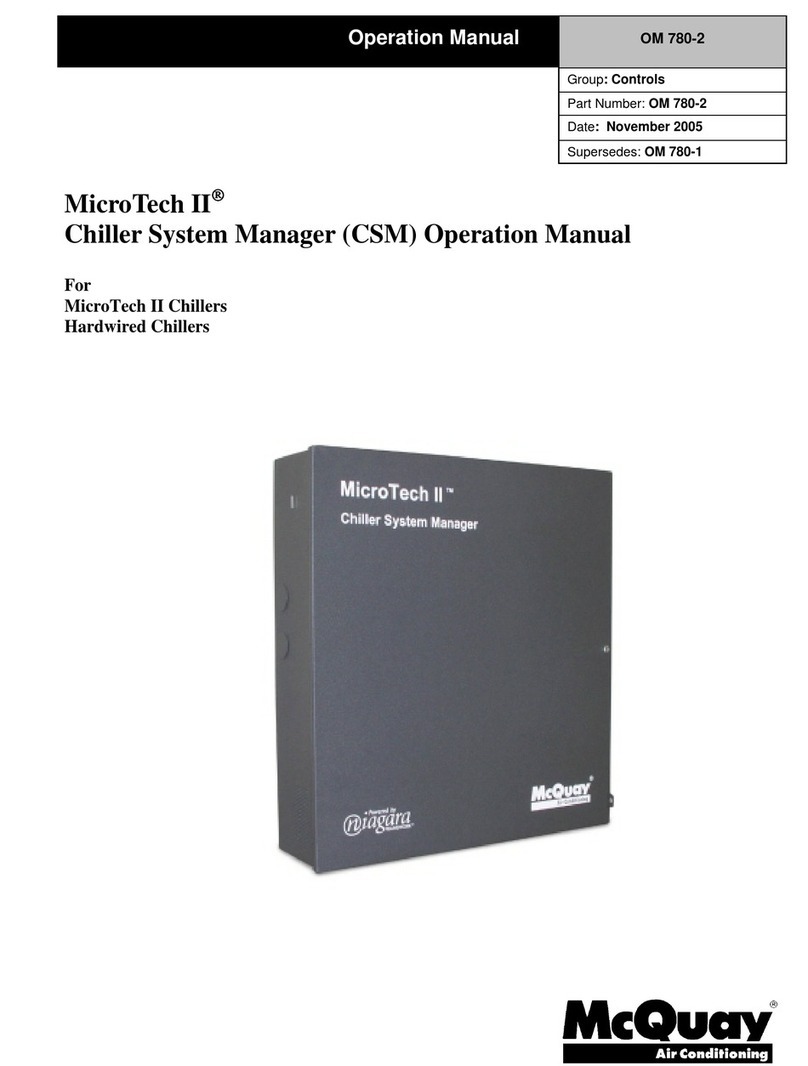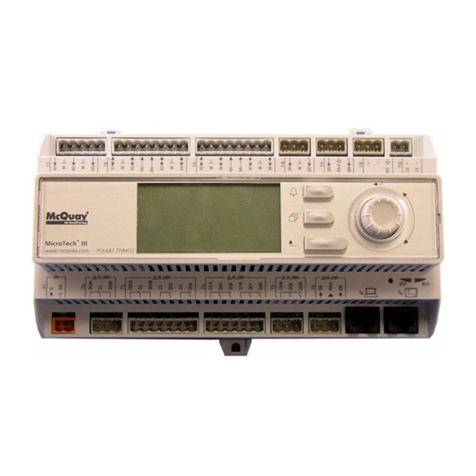
IOMM Starter 5
Interrupting capacity: The maximum fault current that a circuit breaker or fused
disconnect can successfully interrupt. As the rating increases, the construction becomes
heavier duty. For disconnect switches with fuses, the rating is based on 0 to 600 volts.
For circuit breakers, the voltage and amperage relationship is considered with interrupting
capacity decreasing as voltage increases.
Withstand rating: There is a period of time that the short circuit current passes to the
shorted circuit before the protection device can open. This time can be as long as 0.020
seconds (one cycle). The withstand rating of a starter is the maximum short circuit current
that it can pass safely without emitting sparks or debris.
Phase amps: The current draw inside the delta connection of a wye-delta motor winding.
It is equal to 0.577 x RLAof the motor for a specific load.
Open transition: A reduced voltage starter characteristic occurring when the motor is
temporarily disconnected from power at the time the starter changes from the starting
mode to the final running mode. A second smaller inrush spike will occur. McQuay does
not recommend use of this type of starter.
Closed transition: A reduced voltage starter characteristic when the motor is NOT
temporarily disconnected from the line during the transition from starting mode to
operating mode. The electrical load is transferred to resistors during the transition phase
and the second inrush spike is suppressed.
Installation
Mounting Arrangements
Low voltage starters can be factory-mounted with power and control wiring factory-
installed or they can be free-standing, requiring field mounting remote from the unit and
field-wiring of power and control wiring. Because of dimension restrictions for shipping,
some “factory-mounted” starters for large chillers are shipped separate from the unit.
Mounting supports are on the unit and preassembled cable kits are provided. Mounting
and wiring on site are the customer’s responsibility and can be subcontracted to McQuay
Factory Service if desired.
Medium voltage starters and some size low voltage starters on WSC 100 through 126 are
only available for free-standing applications.
Low voltage starters can be supplied in several different mounting arrangements
depending on the chiller size and starter type. See Table 1 for available arrangements.
• Factory-Mounted (optional): The starter is mounted on the chiller unit with the back of
the starter against the motor terminal box and wired directly to the motor. This
arrangement is only available on WSC/WDC 063, 079, or 087 units (cover
photograph).
On models WSC/WDC 048/050, the starter is factory-mounted on the front of the
chiller unit and connected to the motor with conduit and cable.
• Free-standing (standard): Floor-mounted, separate from the chiller unit, and field
wired to the compressor motor. This is available on all units and is the only starter
arrangement available for WDC/WCC 100 and 126 dual compressor units.
• Brackets and cable (optional): Starters for WSC 100 and 126 single compressor units
may be shipped separately from the chiller unit and furnished with mounting brackets
and interconnecting cables for field mounting and connection by others. This option
must be clearly specified when chillers are ordered since brackets are welded onto the
evaporator during its construction.
